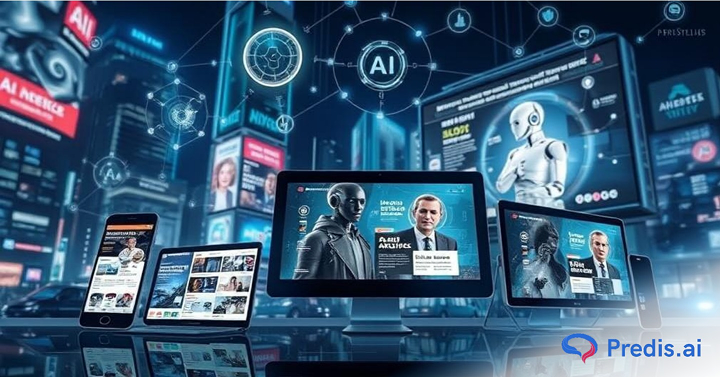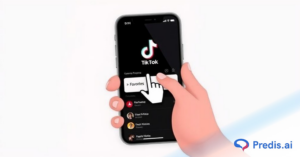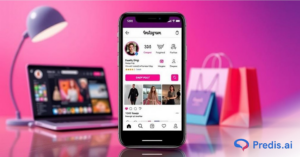Many changes have happened in advertising in the past ten years. These changes will continue as AI shapes the future of advertising. Brands can now connect with their customers better, make their ads work better, and get more for their money thanks to AI. AI is using data-driven insights and automation to help marketers make ads that are more targeted, cost-effective, and effective. AI is used in advertising. This blog will talk about how AI in advertising, its major uses, pros and cons, and what the future holds.
Understanding AI in Advertising
AI in advertising is the use of machine learning, natural language processing (NLP), and data analytics to make different parts of digital marketing easier to do. It is more effective. With these technologies, advertisers can look at huge amounts of data, will get to know how users will act, and will be able to show potential customers ads that are useful to them. Besides search engine marketing, AI is also used in display ads, social media ads, and even old-fashioned media like TV and radio.
Top Use Cases for AI in Advertising
1. AI-Driven Audience Targeting and Personalization
One of the biggest advantages of AI in advertising is that it analyzes consumer data and creates rich and personalized ads. AI algorithms study user behavior, past interactions, and preferences to segment audiences and deliver customized messaging.
Example: E-commerce platforms like Amazon use AI to recommend products based on browsing history, increasing conversions.
2. Real-Time Bidding and Programmatic Ads
Programmatic advertising automates the process of buying and placing ads using AI. With real-time bidding (RTB), AI makes sure that advertisers target the right audience at the right time by optimizing ad spend and improving performance.
Example: Google Ads and Meta’s ad platforms use AI-powered RTB (real time bidding) to show relevant ads to users. This helps in reducing wasted ad spend.
3. Creative Content Generation and Optimization
AI can make and improve the text, pictures, and videos that are used in ads. AI tools look at how well past campaigns did and recommend different ad versions that are more likely to get people’s attention.
Example: Tools like Predis AI and Adzooma use AI to create compelling ad copy that resonates with target audiences.
4. Predictive Analytics and Consumer Behavior
Artificial intelligence (AI) powers predictive analytics. These analytics predict consumer interests, trends, and purchasing behaviors. This data is utilized by marketers to improve targeting, increase engagement, and optimize ad campaigns.
Example: Netflix, uses AI to analyze viewing statistics and provide tailored content recommendations, which can be utilized for targeted advertising.
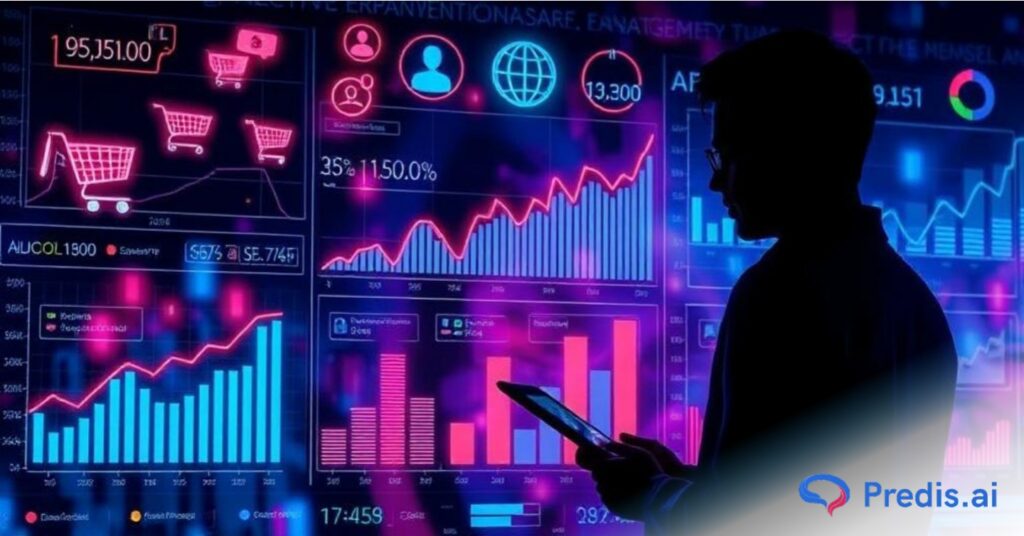
5. Chatbots Driven by AI and Customer Interaction
Chatbots improve customer service by offering prompt answers and tailored suggestions. AI-powered chatbots respond to consumer inquiries, assist customers with transactions, and provide product recommendations based on user history.
Example: Sephora’s AI chatbot assists users in finding cosmetics according to their tastes and skin type.
6. AI for Business Intelligence
AI tools look at the ads, keywords, and engagement metrics of our competitors to figure out what they are doing. This information is helping the companies to stay ahead in the market by letting them change their content strategy.
Example: Pathmatics and SEMrush, use AI to analyze competitors for digital advertising tactics.
7. AI for Optimizing Voice and Visual Search
AI is helping in optimizing ads for voice and visual search with the rise of smart speakers and picture recognition technology. Brands have optimised their content for AI-powered systems such as Alexa and Google Lens.
Example: There is a Starbucks AI-powered assistant, that allows the users to place voice-activated orders.
Real-World Examples of AI in Advertising
- Companies like Delta Airlines and Unilever have incorporated AI-driven ad strategies to enhance personalization.
- Delta uses AI to send customized travel ads based on past bookings and search intent.
- Unilever utilizes AI-powered content analysis to craft highly engaging and relevant ad creatives, improving user engagement and brand recall.
- Nike: Uses AI to personalize email marketing campaigns, increasing customer retention rates
Top AI Advertising Tools
- Predis AI: helps in auto posting and auto generating content.
- Persado: using AI, Persado generates ad copy that is optimized for interaction.
- Emotiva: analyzes emotional reactions in order to improve targeting.
- Pathmatic: advertising campaigns can benefit from Pathmatics’ AI driven competitive intelligence.
- Omneky: this tool does automated ad production and performance tracking.
- Celtra: enhances artificial intelligence-driven creative management and optimization
- GumGum: is a company that focuses on providing contextual advertising solutions backed by artificial intelligence.
- AiAdvertising: Using predictive artificial intelligence, AiAdvertising is able to improve ad spending and targeting.
Benefits of AI in Advertising
- AI automates repetitive operations, which helps to save both time and money. This results in improved efficiency.
- The use of artificial intelligence to generate targeted advertisements in order to boost user engagement can be taken as an example of advanced personalization.
- The use of artificial intelligence (AI) to foresee trends in order to improve advertising success is known as predictive analytics.
- AI optimizes ad budget for better results, which leads to higher return on investment (ROI) and improved ad performance.
Challenges and Ethical Considerations
- Privacy Concerns: People are worried about privacy because AI collects so much information about its users.
- Absence of Human Touch: AI-made content might not be very moving.
- Bias in AI Models: If AI isn’t well supervised, it could support ideas that people already have.
- Regulatory Compliance: Laws like GDPR and CCPA require brands to use AI responsibly. As AI regulations evolve, companies must stay compliant to avoid legal issues and maintain consumer trust.
AI’s Impact on Digital Marketing Strategies
AI’s impact extends beyond advertising and into other sectors of digital marketing.
- SEO: Artificial intelligence aids in content optimization, keyword research, and ranking prediction.
- Email Marketing: AI powered automation improves email segmentation, subject line optimization, and send-time personalization.
- Content marketing: AI tools help with content creation, topic research, and audience sentiment analysis.
- Social Media Marketing: AI proposes the best posting times, automates responses, and personalizes user interactions.
- A/B testing: AI improves A/B testing and customer segmentation by assessing performance data and altering ad creatives to increase engagement.
Future Trends in AI Advertising
AI is shaping the future of advertising by making it more personalized, immersive, and privacy-focused. Here are key trends to watch:
- AI-Powered Voice Search Ads: Optimizing ads for voice assistants like Google Assistant and Alexa.
- AI + AR/VR Integration: Enhancing immersive advertising experiences in augmented and virtual reality.
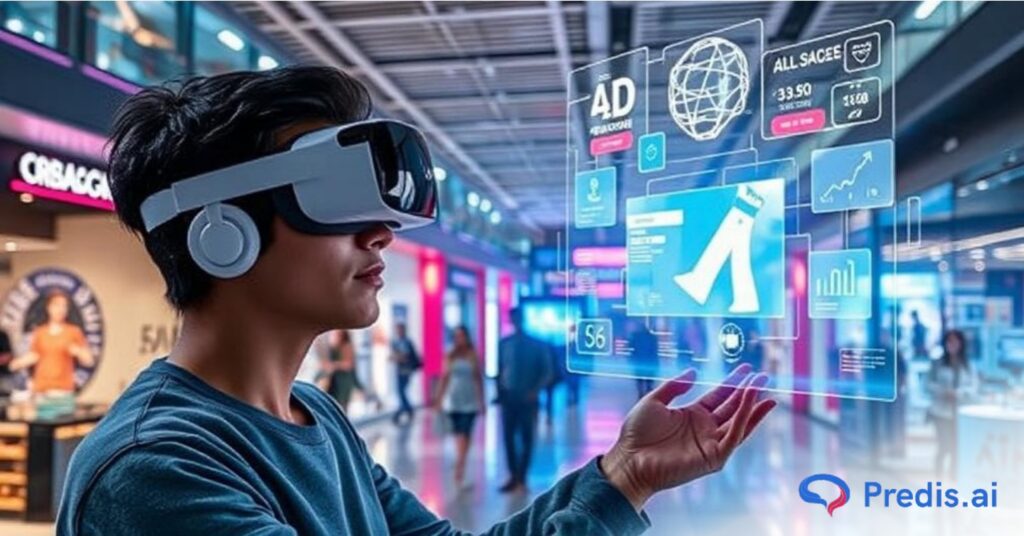
- AI-Generated Influencers: Virtual influencers will become mainstream for brand promotions.
- Cookieless Advertising & Privacy-First Targeting: AI will help brands target users effectively without third-party cookies.
- Metaverse Advertising: AI will drive personalized ad experiences in virtual environments.
- Hyper-Personalized Marketing: AI will deliver real-time, ultra-targeted ads based on user behavior.
Regulatory Compliance & AI Ethics in Advertising
AI is transforming advertising, but it comes with challenges and ethical concerns that businesses must address.
- GDPR & CCPA Compliance: The General Data Protection Regulation (GDPR) in Europe and the California Consumer Privacy Act (CCPA) in the U.S. require brands to handle consumer data responsibly. Companies using AI-powered advertising must obtain user consent, provide transparency, and allow users to control their data.
- Transparent AI Models: Brands must ensure their AI-driven advertising systems are fair and unbiased. Regular audits, clear decision-making processes, and explainable AI help prevent discrimination and unethical targeting.
- Eliminating AI Bias: AI models can unintentionally reinforce biases present in training data. Businesses must continuously monitor AI systems to ensure fair representation across all demographics.
- Best Practices for Ethical AI Use: Regular compliance audits, responsible data collection, and clear consumer communication help brands maintain ethical AI advertising. Staying updated on new AI regulations ensures long-term trust and sustainability.
How to Start Using AI in Advertising?
AI in advertising requires careful planning and a clear understanding of how it can enhance your campaigns. Follow the below steps:
- Determine how AI can assist by identifying your campaign’s goals. Whether it’s improving targeting, personalizing ads, or optimizing budgets, AI can make a big impact.
- Select the right AI tools by researching platforms that align with your needs. Look for AI-driven solutions for creative generation, data analysis, or campaign optimization.
- Once you’ve chosen the tools, integrate AI into your campaigns. Use it to automate repetitive tasks, deliver personalized ads, and improve targeting. AI should enhance the overall effectiveness of your ads.
- Regularly monitor AI outputs to ensure accuracy and fairness. AI can sometimes make errors, so it’s crucial to track its performance and adjust as needed.
- Finally, engage in ongoing education. Stay updated on the latest AI trends and advancements to ensure your advertising strategy remains competitive and efficient.
Boost Sales on Social Media with AI ⚡️
TRY NOWFAQ
AI is used in Google Ads for automated bidding and audience targeting.
Tools like Predis. ai, Persado and Celtra are great for AI-driven ad content.
AI enhances personalization, ad targeting, and campaign performance.
AI enhances creativity but cannot fully replace human intuition.
Conclusion
AI is revolutionizing advertising by making campaigns more efficient, data-driven, and personalized. Businesses that leverage AI can significantly improve their ad performance and customer engagement. However, ethical AI use and compliance with data privacy laws remain crucial. The future of advertising will be shaped by AI, and brands must adapt to stay competitive in this evolving landscape.


